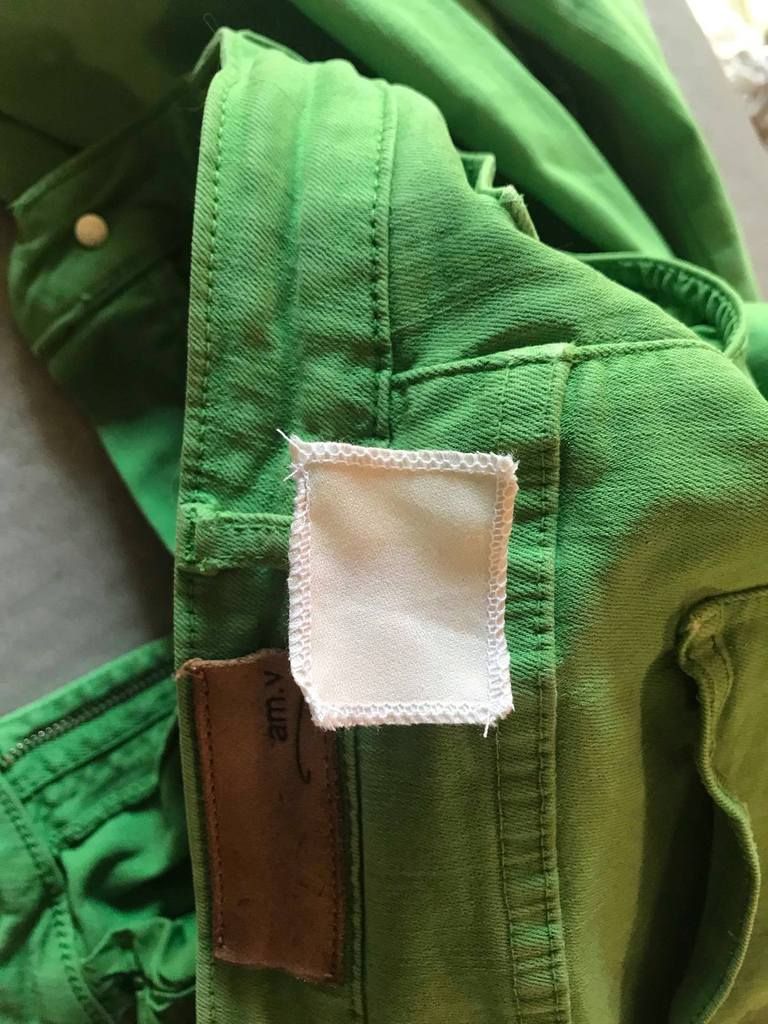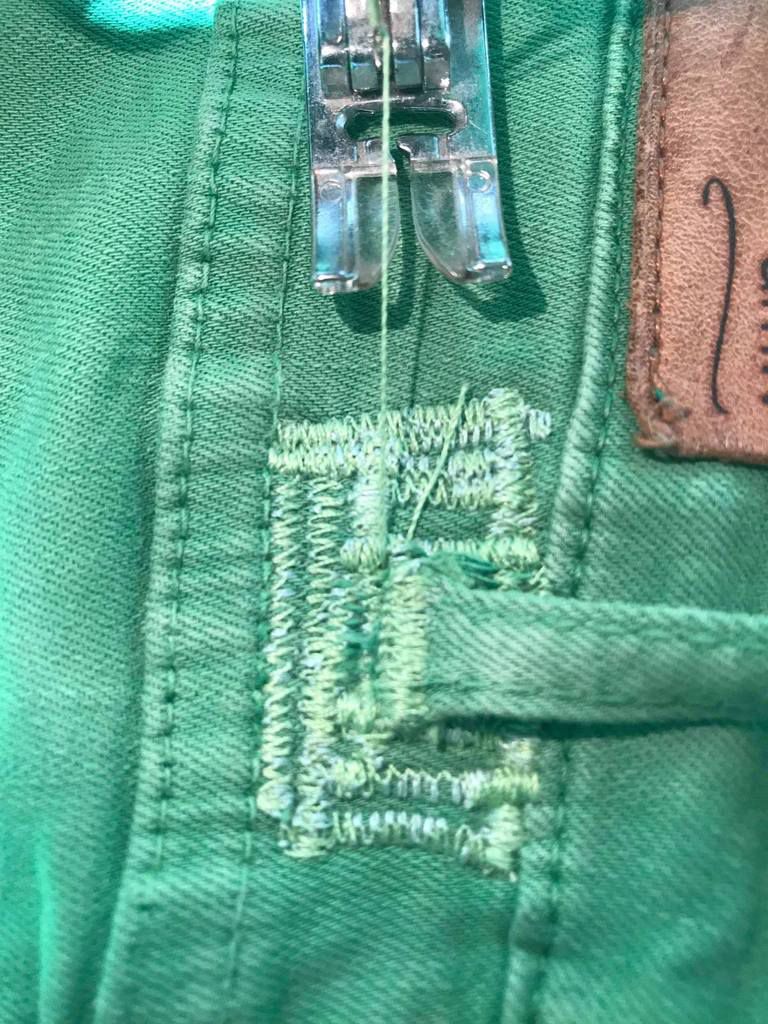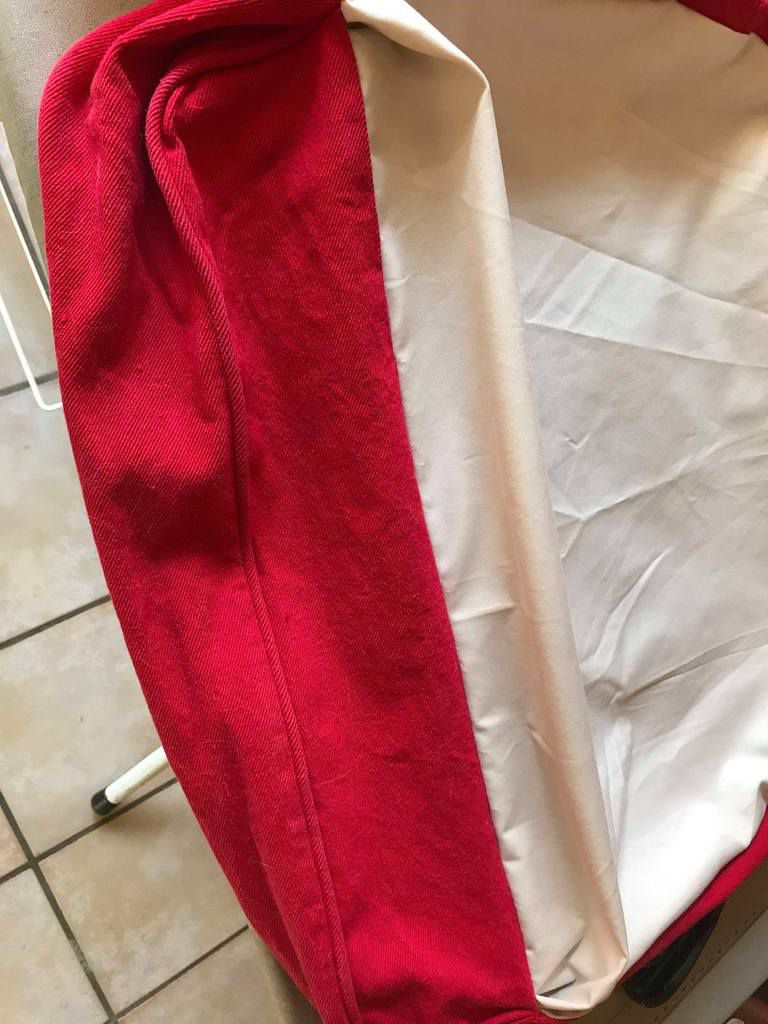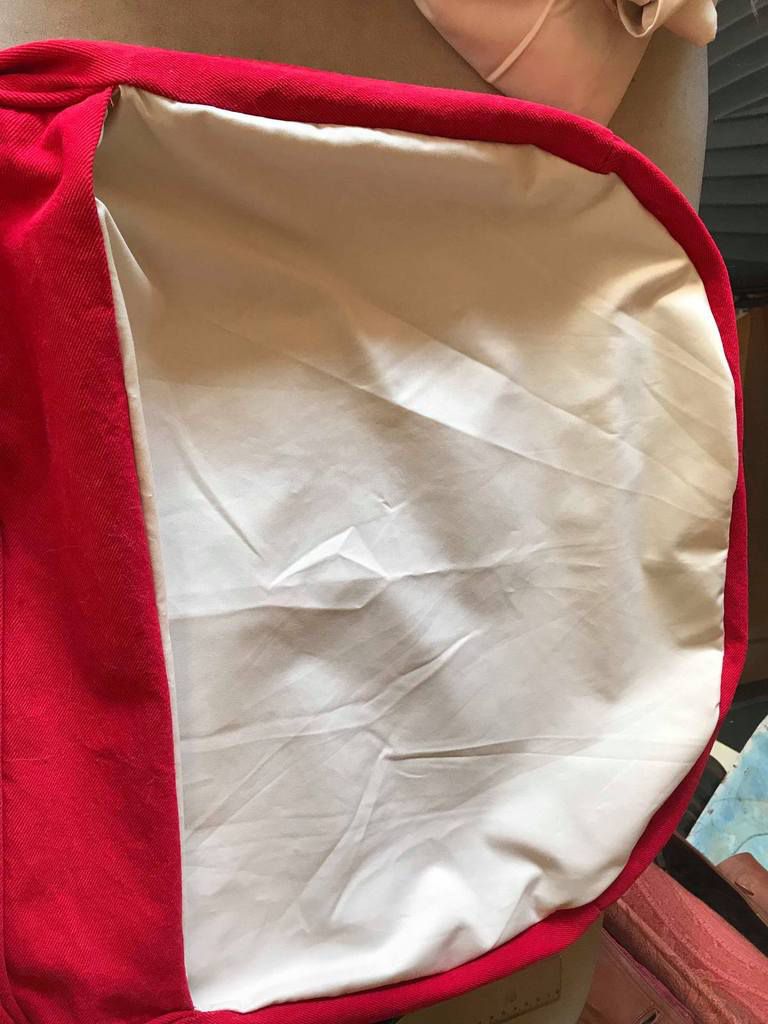Toujours dans la série bricolage maison et récupération des pantalons préférés, le passant de ce pantalon a lâché!
Je partage ici la technique je dirais, je compte sur vous pour faire cela de manière plus nette.
On va utiliser ici une pièce de tissu à l'intérieur, puis la fixer très fortement au point zig zag car les passants sont très sollicités.
- surjeter le pourtour de la pièce utilisée (choisir un tissu élasthane, de préférence de la couleur du pantalon)
- la placer sur le dessous, poser des épingles
- Piquer sur le dessus pour fixer cette pièce au par un point zig zag sur le pourtour (préférer un fil de la couleur du tissu, utiliser une aiguille de gros diamètre 110-100, faire un essai pour sélectionner un point zig zag peu large et serré)
- concernant la ligne qui passera sous le passant: piquer le plus loin que vous pouvez dans un sens, en le décalant au maximum, finir par un aller-retour et recommencer dans l'autre sens en superposant les lignes de couture sous le passant
- puis faire à nouveau plus centré, une seconde ligne de piqûre, puis une troisième (peut être pas la peine d'en faire autant que sur mon exemple ![]() )
)
- enfin, piquer le bas du passant sur la pièce ainsi bien fixée, au point zig zag encore un peu plus serré (ici il faudra peut être aider à la main l'entrainement de la machine car vous aurez beaucoup d'épaisseurs de tissu)
et voili!
Still in the homemade DIY series and recovery of favorite pants, the belt loop of these pants dropped! I share the technique here I would say, I'm counting on you to do that more clearly. We will use here a piece of cloth inside, then fix it very strongly at the zigzag point because the passers-by are very solicited.
- put on the edge of the piece used (choose an elastane fabric, preferably the color of the pants)
- place it on the bottom, put pins
- Stitch on top to secure this piece to a zigzag stitch around the edge (prefer a thread of the fabric color, use a large diameter needle 110-100, try to select a zig zag bit wide and tight)
- concerning the line that will pass under the passer-by: stitch as far as you can in one direction, by shifting it as far as possible, finish with a round-trip and start again in the other direction by superimposing the seam lines under the belt loop
- then make again more centered, a second line of sting, then a third (may not be worth doing as much as on my example)
- Finally, stitch the bottom of the loop on the piece well fixed, zig zag point even a little tighter (here it may be necessary to help the hand training machine because you will have a lot of fabric thickness)and this is it!














































































